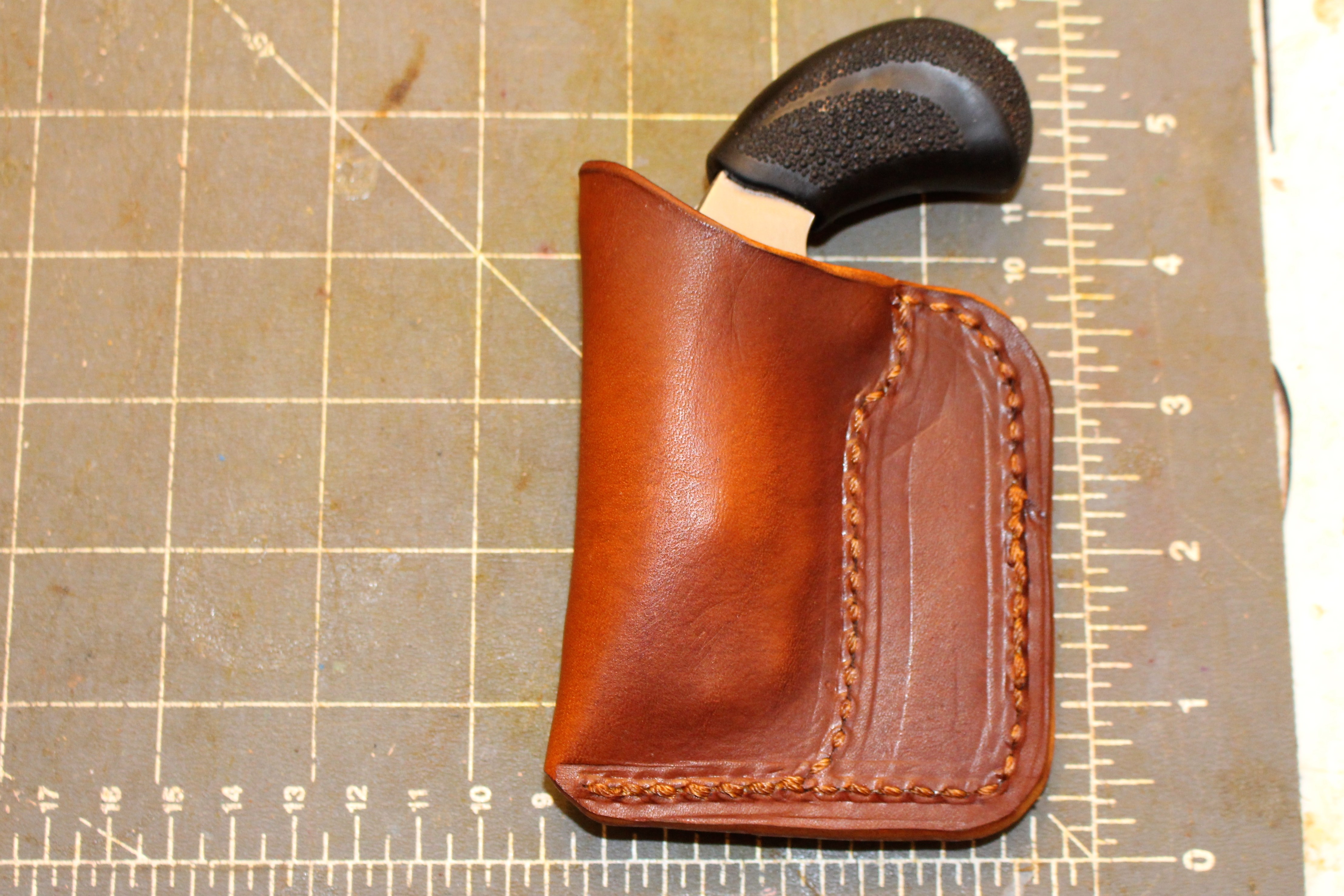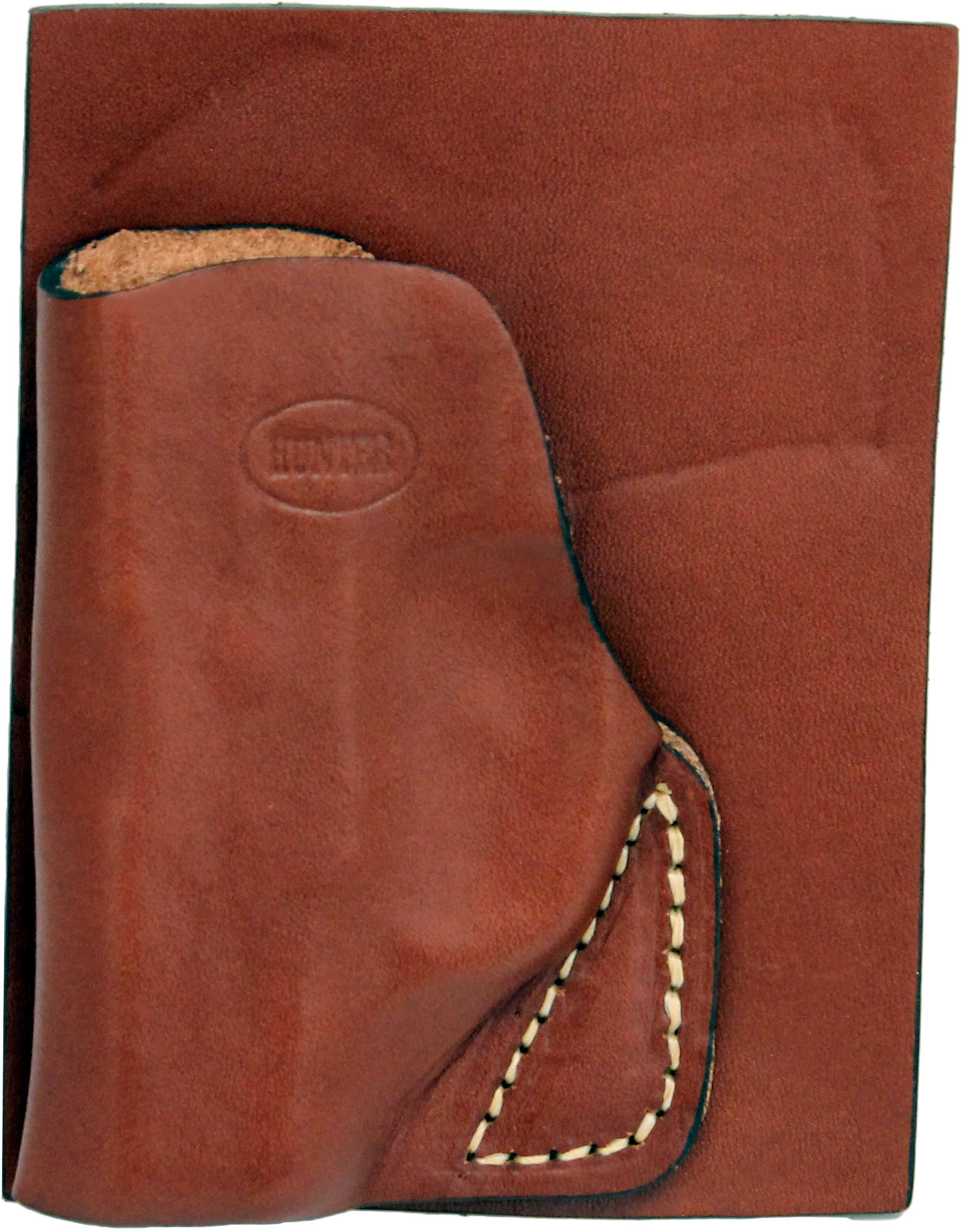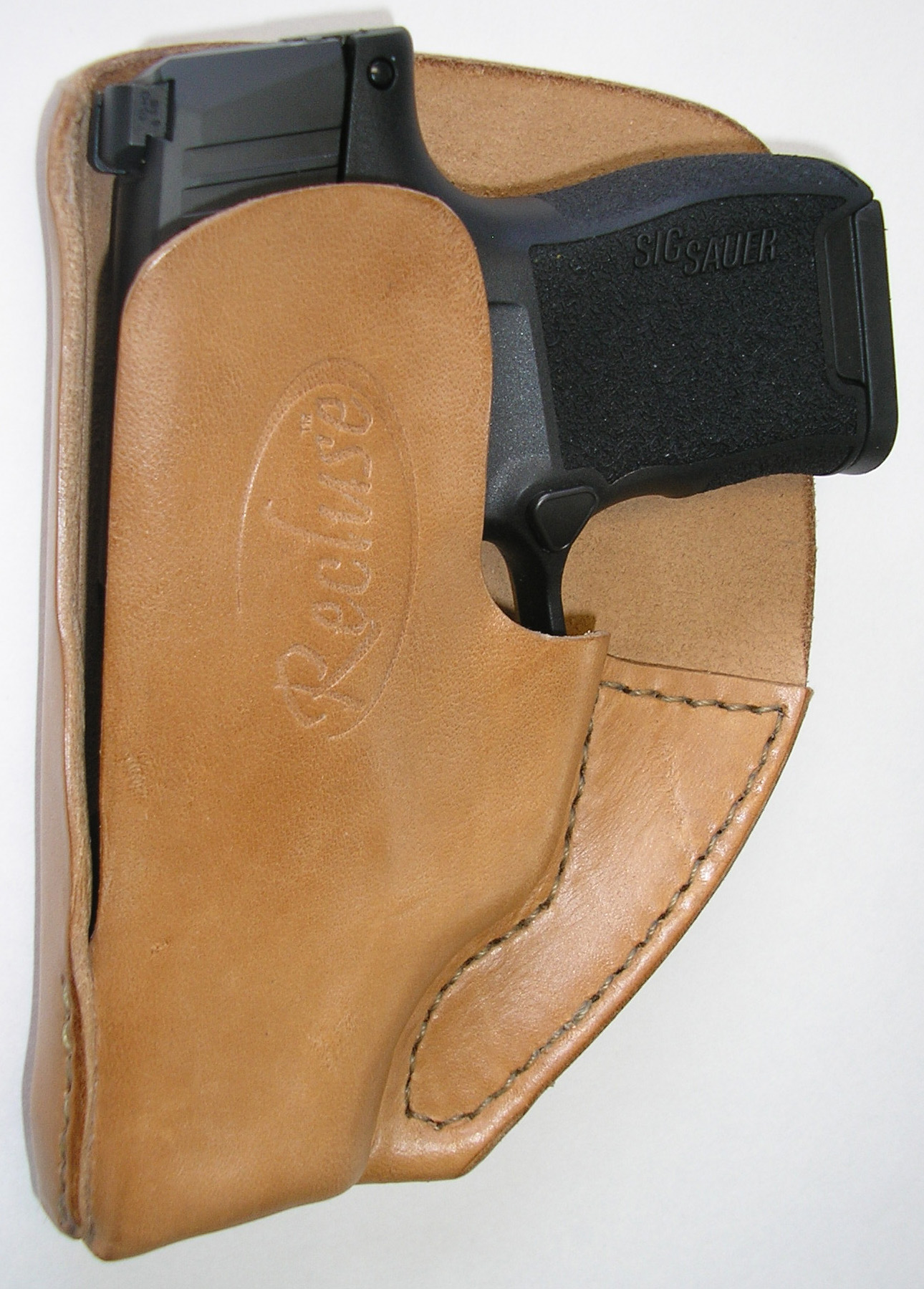

Those corners, and the rigidity of the leather (or Kydex), helps to obscure the shape of the gun. But the rectangular shape of the recluse allows for sharp corners.


Many holsters have bulbous bends due to the leather or material being bent into shape. The Recluse holster is larger than a cell phone, but not as bulky as some of the competition. And the front of the block is sloped down and shaped so that there’s still enough mass for friction, but not enough mass to obstruct a clean draw. The trigger cut out is recessed only as far as the trigger is recessed from the frame. The back of the block is shaped to fit the contour of the frame. Until your hand slides between the holster and the gun, which dislodges the trigger from the block, it can’t move. With the Recluse, the trigger is securely held by the block and can’t move. As such, there is always a danger that something in the pocket (a bad idea) could, however unlikely, cause an accidental discharge. Most pocket guns don’t have manual safeties. It is also this piece that makes the holster safe. It is this piece that makes the holster work. And its placement on the one sided holster also has to be exact.

The trigger block is made of a super dense foam that looks like it is shaped by hand. Most pocket holsters are just a piece of leather or nylon sewn up to hold a gun. With seven in the P3AT, and an additional seven in the holster, Recluse has a serious leg up on most of the competition. It also forms a small pocket for an additional magazine (even a seven round P3AT magazine). On the barrel end of the holster, the recluse wraps around and helps keep things clean. A channel inside the foam secures the trigger. On the other side, the gun is held in place by a rubber insert that fits inside the trigger guard. The Recluse uses one stiff side of leather or polymer to cut down on printing. The idea is harder to explain than most pocket holster designs (which work like a pocket that goes inside your pocket). Recluse makes what they call a One Sided holster.


 0 kommentar(er)
0 kommentar(er)
